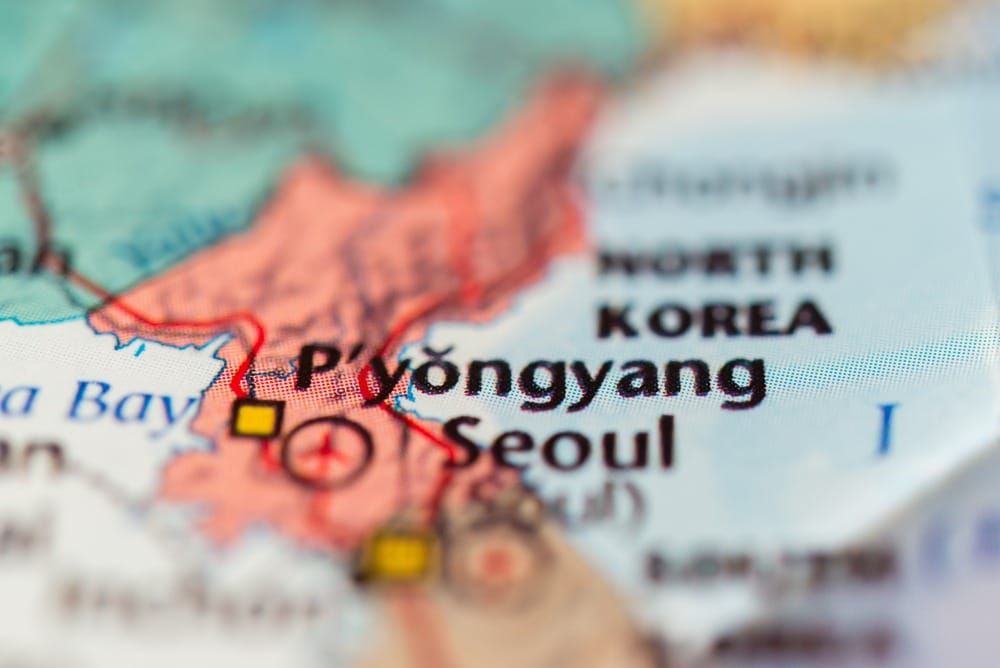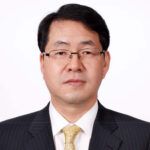Reprocessing policy and South Korea’s new government
By Jungmin Kang, Frank von Hippel | May 15, 2017

Under President Park Geun-hye, who was impeached in March, and her predecessor, Lee Myung-bak, KAERI’s reprocessing program became a major issue between South Korea and the United States. During negotiations on a new nuclear cooperation agreement, South Korea insisted that the Obama administration give it the same prior consent to reprocess that the Reagan administration had given to Japan in 1988. The Obama administration resisted. Opposition to the spread of reprocessing has been US policy since the 1970s, when India used a supposedly peaceful reprocessing program to launch its nuclear weapons program. Japan’s program, which, like India’s, had been launched in the 1960s with the encouragement of the US Atomic Energy Commission, was too far down the road to stop.
Ultimately, in 2015, after prolonged negotiations, South Korea and the United States reached a compromise in which they agreed to complete a 10-year Joint Fuel Cycle Study in 2021 and then discuss whether to revise the agreement.
In the meantime, the United States agreed that KAERI could do limited experimentation at its facilities in Daejeon. The institute plans to start experiments in July on the first stage of pyroprocessing, a type of reprocessing developed by the United States in the 1960s to process the metal fuel of an experimental breeder reactor. KAERI will be allowed to convert a small quantity of spent oxide fuel into metal, with the filtered release of fission gases. The Fukushima accident, scandals in South Korea over nuclear power plant parts with fake documentation and a recent blockbuster film, Pandora, about a fictional catastrophic nuclear power plant accident in South Korea have made the public quite skittish about nuclear power, however. There is increasing public opposition in Daejeon to even these small experiments.
South Korea’s policy on pyroprocessing and sodium-cooled reactors dates to 2008, when the government announced a “Long Term Plan for Research and Development on a Future Nuclear Energy System” based on these technologies. According to the plan, a demonstration pyroprocessing facility and a demonstration sodium-cooled reactor would be put into operation in 2025 and in 2028 respectively.
KAERI and the ministry that funds it have been promoting pyroprocessing as a technology that could reduce the volume of high-level radioactive waste requiring deep disposal by a factor of up to 20, the area required for geologic disposal by a factor of up to 100, and the toxicity of the radioactive waste by up to a factor of 1,000, relative to spent fuel. All these claims are false. Pyroprocessing is not a dream technology that can solve South Korea’s spent-fuel problem. It is a costly detour to nowhere.
Reprocessing will not solve the spent fuel storage problem. According to a 2015 report coauthored by KAERI researchers, the pyroprocessing of used oxide fuel will produce six primary high-level radioactive waste streams, ranging from contaminated fuel assembly hardware and cladding to a variety of salt and metal wastes created by the process. According to South Korean and US regulations, all these waste streams would have to be disposed of in deep underground high-level-waste repositories. KAERI’s claim that pyroprocessing will reduce the volume of high-level radioactive waste by a factor of 20 to the volume of the fission products in the spent fuel is therefore simply not true. Indeed, the combined volume of all these waste streams could be larger than that of the original spent nuclear fuel.
The area required in a geologic repository to accommodate these wastes will depend on the amount of heat generated from the radioactive waste. To protect the integrity of the containment functions of the clay around the radioactive waste containers, its temperature must be kept below the boiling point of water. Therefore, the lower the amount of radioactive heat generated in the containers, the more compact the repository can be. Two 30-year-half-life fission products, cesium 137 and strontium 90, are the dominant sources of heat in spent fuel for the first 50 years after discharge from a power reactor, and they represent a significant share of that heat for 200 years. KAERI proposes to reduce the deep disposal area required for radioactive waste by separating these radioisotopes from spent fuel and storing them for 200 to 300 years on the surface.
Cesium 137 and Strontium 90 are also the most dangerous radioisotopes in the spent fuel during this period, however, and the process of separating them would increase the risk of their release into the human environment. If they are to be stored on the surface for a prolonged period, it would be safer and much less costly to store them immobilized in the intact spent fuel.
Furthermore, KAERI proposes that the spent fuel from the four heavy-water CANDU reactors at the Wolsong Nuclear Power Plant not be pyroprocessed and be disposed of directly in a deep geological repository. The CANDU reactors will produce about 16,000 metric tons of spent fuel over their 40-year design lives—about the same amount as will be generated by South Korea’s 21 currently operating pressurized-water reactors. Because the CANDU spent fuel will produce less heat per ton, it will require 0.18 times as much space per ton as fuel from pressurized water reactors. On this basis, the unreprocessed CANDU fuel would by itself account for 15 percent of the repository area that would be required if the pressurized water reactor fuel also were deposited underground without reprocessing. Thus, even if all of KAERI’s plans were carried out successfully, its claim that pyroprocessing pressurized water reactor fuel would reduce the repository area of spent fuel to one-hundredth of what would otherwise be required would not be true, either.
Finally, we have KAERI’s claim that fissioning the transuranic nuclides in fast-neutron reactors would reduce the radiotoxicity of pressurized water reactor spent fuel one thousand-fold. In fact, studies in the United States and France have concluded that eliminating plutonium and other transuranic elements would not significantly reduce the hazard from radioactive waste.
KAERI’s own calculations find that the hazard of radioisotopes leaking to surface waters from a spent fuel repository would be dominated in the short term by fission products and carbon 14 produced by neutron bombardment of nitrogen in the fuel, and in the long term by radon. Because transuranics are relatively insoluble in deep underground, oxygen-depleted water, their contribution to the hazard at the surface is relatively minor. Radon is a decay product of U-238, which is naturally present throughout the Earth’s crust at an average concentration of 3 grams per ton. Radon is a well-known natural hazard to which the uranium in deeply-buried spent fuel would make a relatively minor local contribution.
If KAERI’s plans were carried out for a stable nuclear capacity, fissioning the transuranics in spent fuel would require more than one fast-neutron reactor per two pressurized water reactors, assuming the same generation capacity per reactor. For the 40 such reactors currently planned to be in operation in South Korea by 2035, it would be necessary to build more than 20 fast-neutron reactors to keep up. Even if all the pressurized water reactors were shut down, it would take fast-neutron reactors 100 years to reduce the transuranics in the spent light water reactor fuel by 90 percent.
The high cost and poor safety record of fast-neutron reactors. Because of their high cost and safety problems—which include sodium fires, among other things—and despite 60 years of effort and more than $100 billion of investment worldwide aimed at commercializing fast-neutron reactors, only two prototypes are operational in Russia, with another under construction in India. France and Japan, the two countries that have made the largest commitment to reprocessing, see the commercialization of fast-neutron reactors to be at least decades away. Their policy, therefore, is to use their separated plutonium to fuel their existing light water reactors. This reduces their uranium requirements by about 10 percent but at 10 times the cost of the low-enriched uranium fuel that otherwise would be used.
South Korea’s science ministry and KAERI estimate that it will cost about 3.6 trillion Korean Won (about $3.2 billion) to build a demonstration pyroprocessing facility and fast-neutron reactor.
This estimate includes: 1.7 trillion Won for a fast-neutron reactor with an electric capacity of 150 megawatts–less than one percent of the capacity of South Korea’s currently operating PWRs–and 1.1 trillion Won for a pyroprocessing facility with capacity of 30 tons of spent fuel per year. This would deal with 7.5 percent of the annual spent fuel production of South Korea’s operating pressurized water reactors.
Currently, KAERI is seeking a 4-square-kilometer site to host those facilities.
Typically, the actual cost of nuclear facilities is more than twice the cost originally estimated. Furthermore, the science ministry and KAERI have omitted many costs in their estimate, including the cost of the land, compensation to the community hosting the nuclear facilities, operation and maintenance costs of the facilities over their lifetimes, the cost of a second pyroprocessing facility for the spent fuel of the fast reactor, and decommissioning and decontamination costs, which can be very high for nuclear facilities. Correction of the above underestimates and omissions could result in an actual cost of about 30 trillion Won ($26 billion) for the construction, operation and decommissioning of the demonstration pyroprocessing and fast reactor facilities.
Pyroprocessing all of South Korea’s pressurized water reactor spent fuel and burning the separated transuranics in fast reactors would cost an immense amount. Today only France and Japan force their nuclear utilities to reprocess, and neither has forced its utilities to buy fast-neutron reactors since the failure of their fast-neutron demonstration projects, Superphénix in France and Monju in Japan. In the United Kingdom, whose breeder program ended in 1994, France’s nuclear utility, Électricité de France (EDF), now operates all the nuclear power plants; the UK government gave EDF the option not to renew its reprocessing contract. As a result, the UK’s reprocessing plants will shut down in a few years when their existing contracts have been fulfilled.
Reprocessing is very costly. Japan’s Atomic Energy Commission estimated in 2011 that building Japan’s reprocessing plant and operating it for 40 years will cost 11.5 trillion yen (about $100 billion). Pyroprocessing would be even more costly. In 1995, the Idaho National Laboratory, from which KAERI has been acquiring pyroprocessing technology, proposed to demonstrate that technology by processing 3.1 tons of Experimental Breeder Reactor II spent fuel by 2000. As of 2012, it had succeeded in processing only 0.8 tons.
With the election of a new president, South Korea has an opportunity to put KAERI’s fantasies aside. At the same time, South Korea must deal with the problem of spent fuel produced by its commercial light water reactor fleet. The safest and least costly policy, after pool cooling for a few years, is to store the fuel in dry, passively air-cooled casks and then to place it in carefully engineered repositories, deep underground.
Together, we make the world safer.
The Bulletin elevates expert voices above the noise. But as an independent nonprofit organization, our operations depend on the support of readers like you. Help us continue to deliver quality journalism that holds leaders accountable. Your support of our work at any level is important. In return, we promise our coverage will be understandable, influential, vigilant, solution-oriented, and fair-minded. Together we can make a difference.
Topics: Analysis, Nuclear Energy















